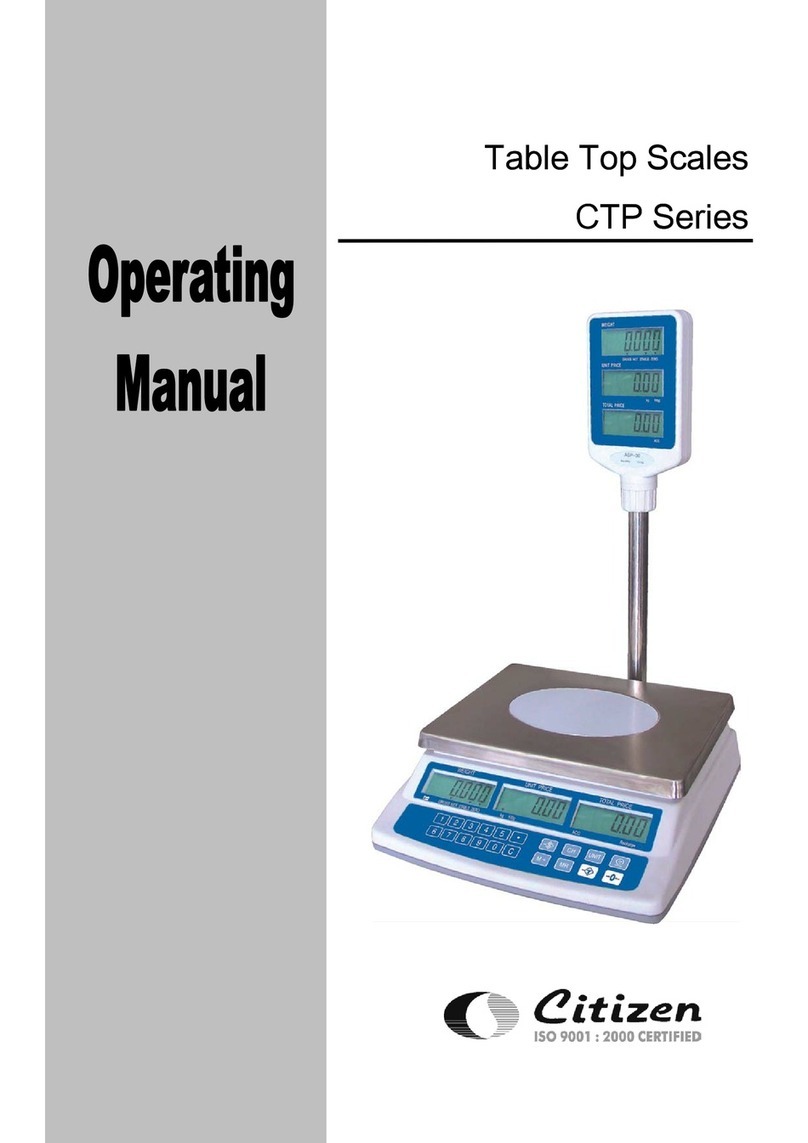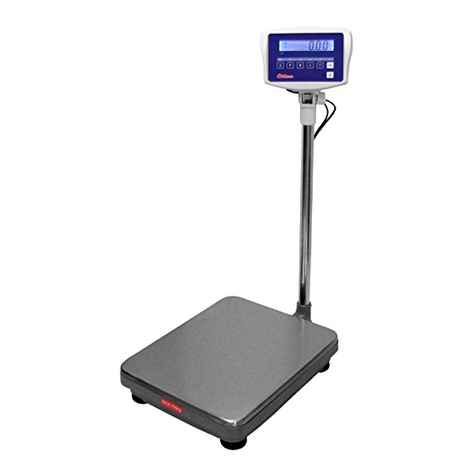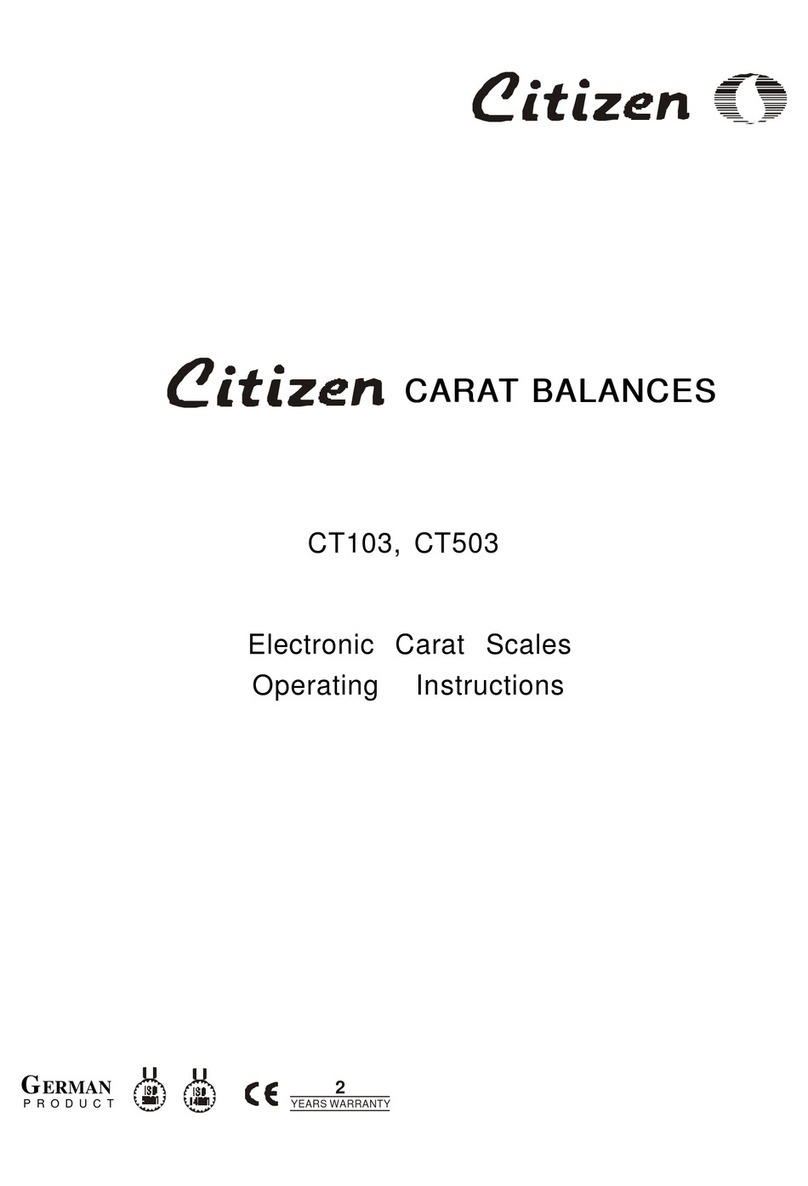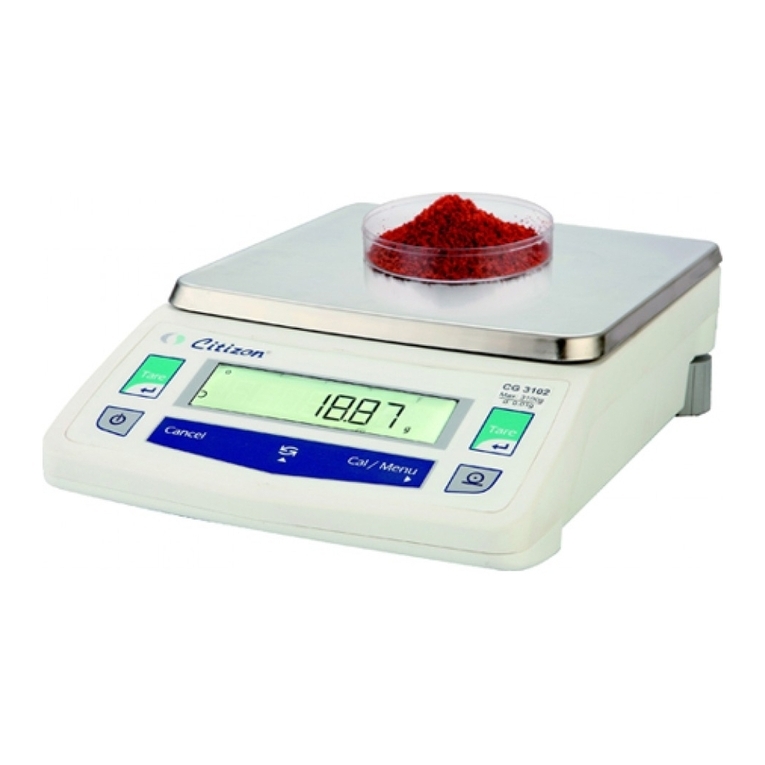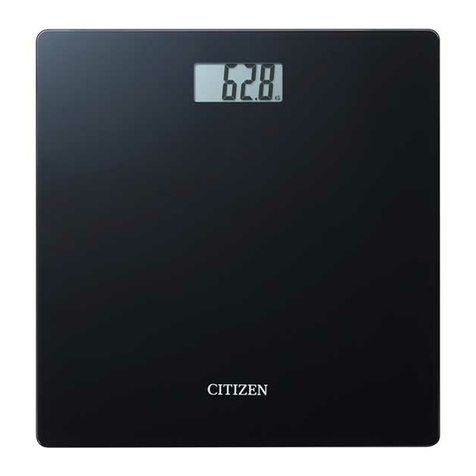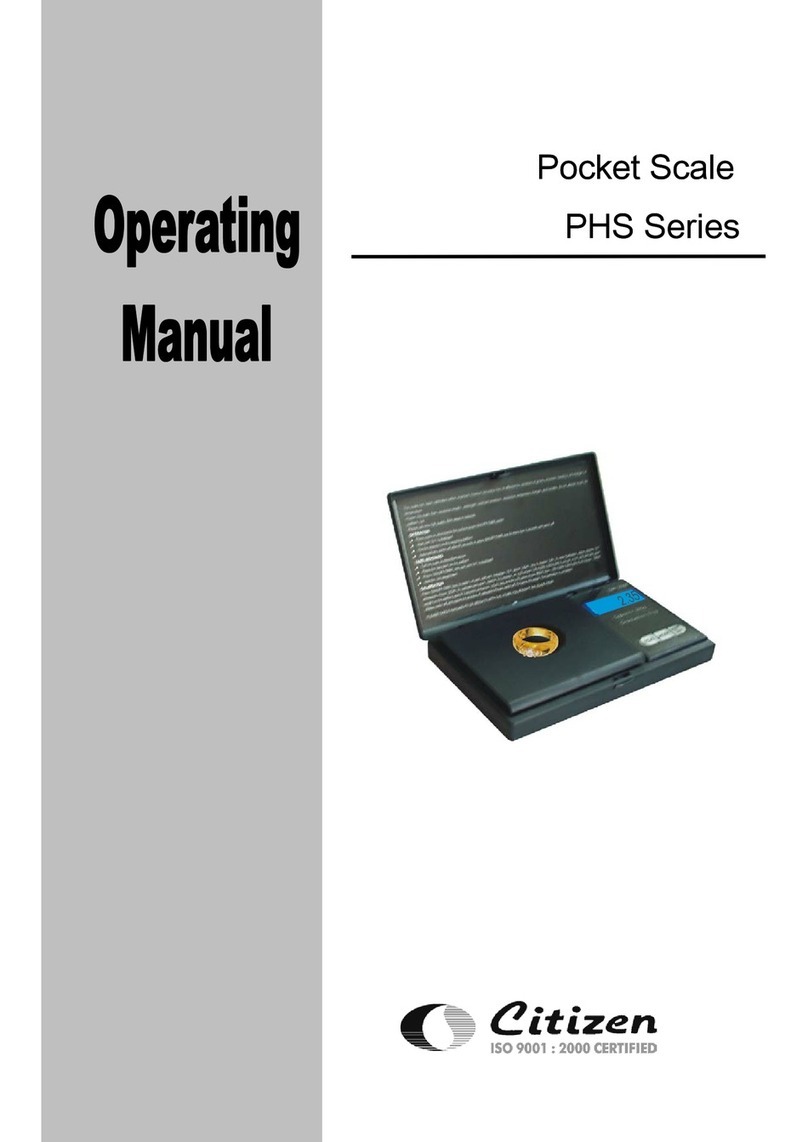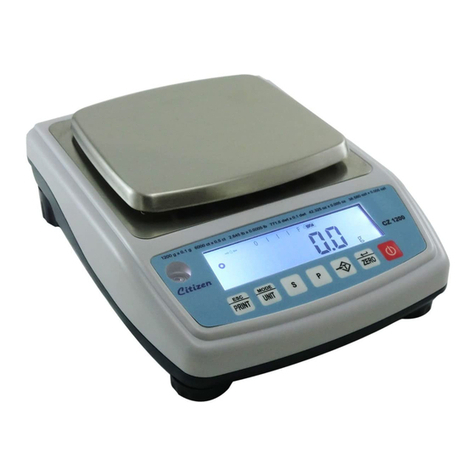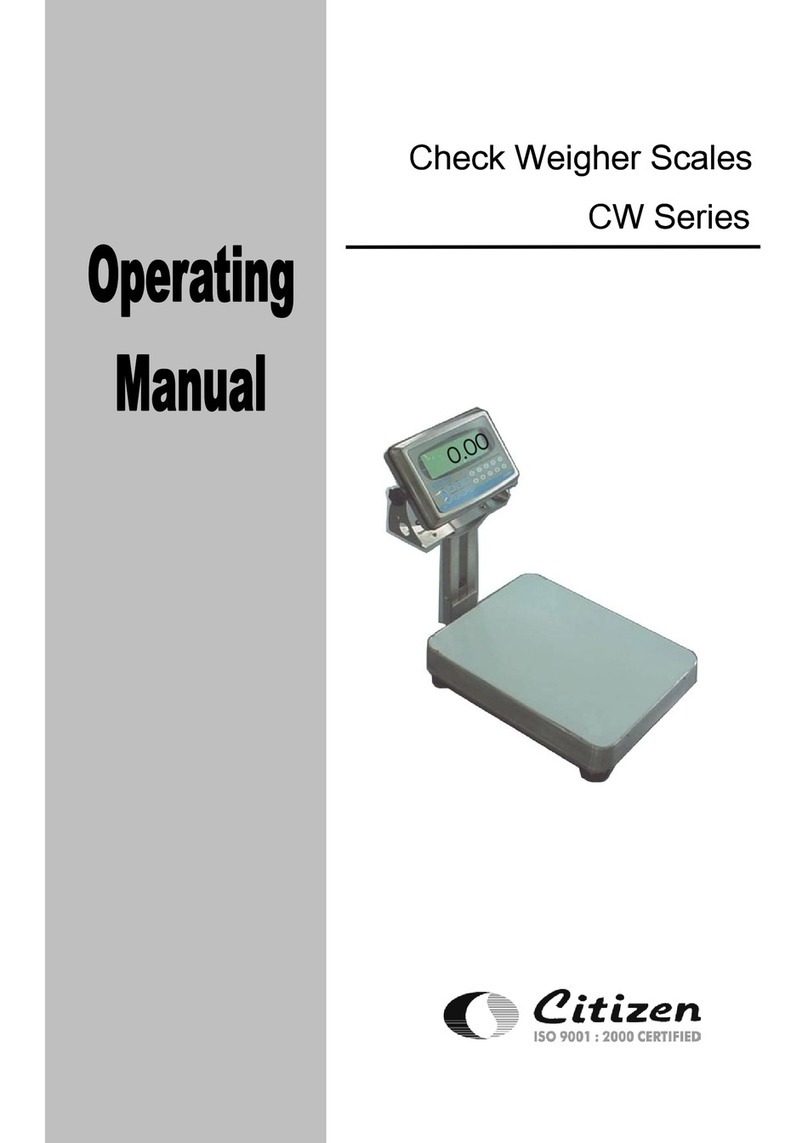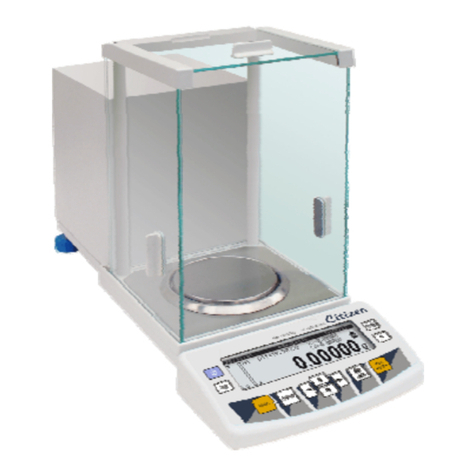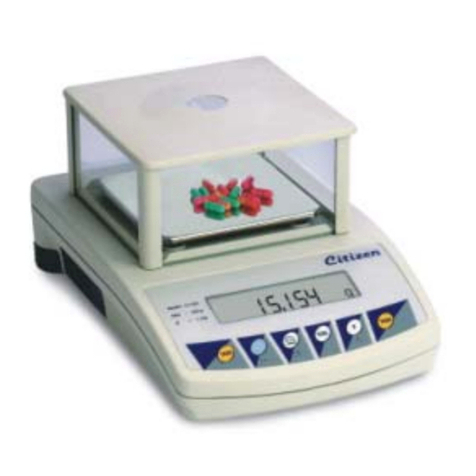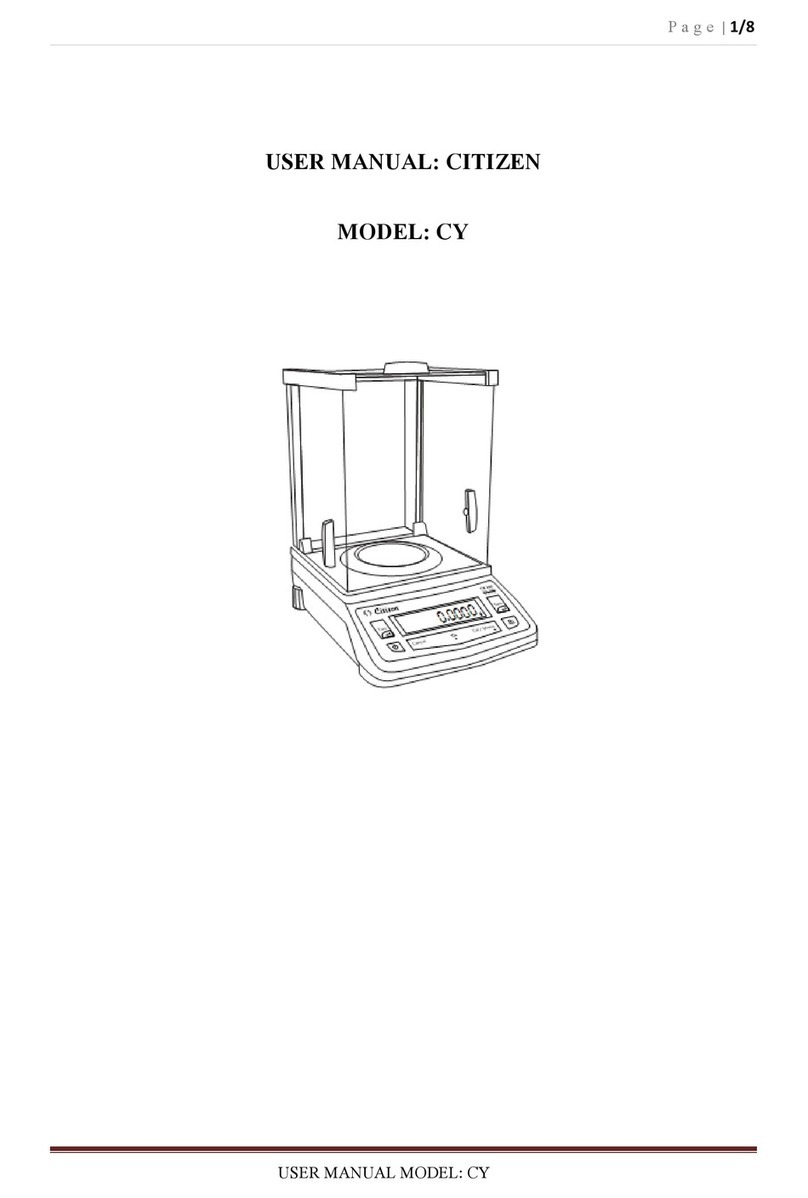CKG counting scales user’s guide
--7
6.2 Taring
There are two methods to enter a tare value. The first uses the weight on the platform and
the second uses a value input by the user.
6.2.1 normal tare
Zero the scale by pressing the ZERO key if necessary. The zero indicator will be on.
Place a container on the platform, a value for its weight will be displayed.
Press the TARE key to tare the scale. The weight that was displayed is stored as the tare
value and that value is subtracted from the display, leaving zero on the display. The "Net"
indicator will be on. As product is added only the weight of the product will be shown. The
scale could be tared a second time if another type of product was to be added to the first
one. Again only the weight that is added after taring will be displayed.
When the container is removed a negative value will be shown. If the scale was tared just
before removing the container this value is the gross weight of the container plus all product
that was removed. The zero indicator will also be on because the platform is back to the
same condition it was when the ZERO key was last pressed.
6.2.2 Predictable tare
This method allows you to enter a value for the tare weight from the keypad. This is
useful if all containers are the same or if the container is already full but the net weight is
required and the tare weight of the container is known.
Remove all weight from the platform, press the ZERO key to zero the display.
Enter the value for the Tare weight using the keypad, press TARE to store the tare value.
The weight will show a negative value equal to the tare.
Place the container on the platform.
The display will then show the weight of the container minus the tare weight. Then when the
full container is put on the platform the tare value will be subtracted from the gross weight
displaying only the net weight of the contents.
If the value input is not consistent with the increment of the scale the scale will round the
tare value to the nearest value possible. For example if a tare value of 10.3g is entered onto
the 6Kg/0.5g scale then the display will show -10.5g.
